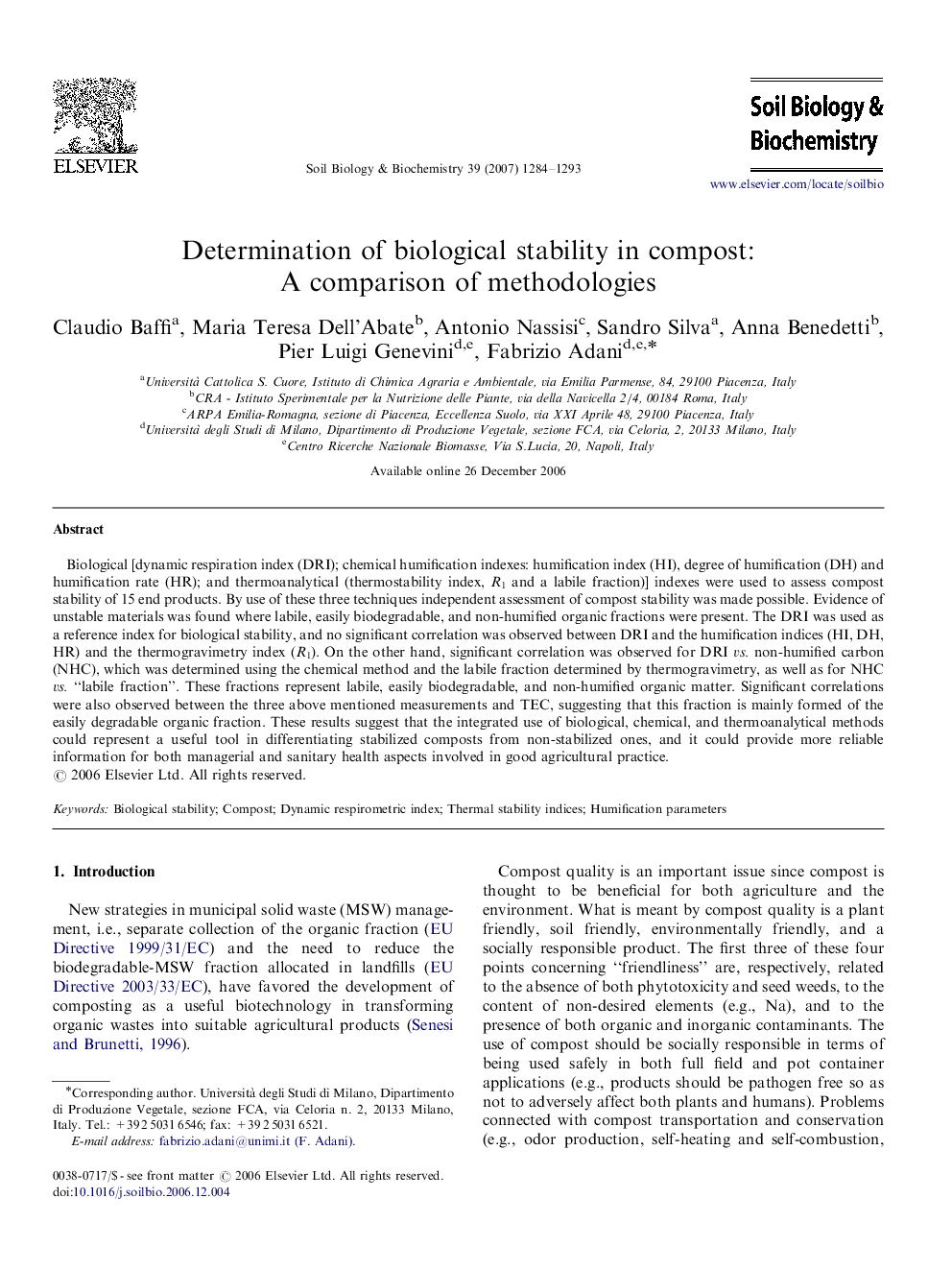| Article ID | Journal | Published Year | Pages | File Type |
|---|---|---|---|---|
| 2027058 | Soil Biology and Biochemistry | 2007 | 10 Pages |
Biological [dynamic respiration index (DRI); chemical humification indexes: humification index (HI), degree of humification (DH) and humification rate (HR); and thermoanalytical (thermostability index, R1 and a labile fraction)] indexes were used to assess compost stability of 15 end products. By use of these three techniques independent assessment of compost stability was made possible. Evidence of unstable materials was found where labile, easily biodegradable, and non-humified organic fractions were present. The DRI was used as a reference index for biological stability, and no significant correlation was observed between DRI and the humification indices (HI, DH, HR) and the thermogravimetry index (R1). On the other hand, significant correlation was observed for DRI vs. non-humified carbon (NHC), which was determined using the chemical method and the labile fraction determined by thermogravimetry, as well as for NHC vs. “labile fraction”. These fractions represent labile, easily biodegradable, and non-humified organic matter. Significant correlations were also observed between the three above mentioned measurements and TEC, suggesting that this fraction is mainly formed of the easily degradable organic fraction. These results suggest that the integrated use of biological, chemical, and thermoanalytical methods could represent a useful tool in differentiating stabilized composts from non-stabilized ones, and it could provide more reliable information for both managerial and sanitary health aspects involved in good agricultural practice.
